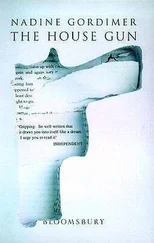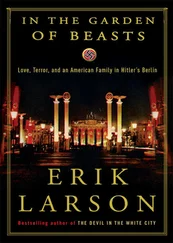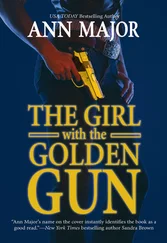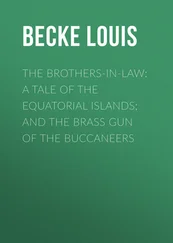Others portrayed gun violence as the only effective course of action against evil, as in George Stevens’s 1953 blockbuster, Shane . In the movie, Alan Ladd plays a gunfighter who rides into the middle of a conflict between homesteaders and the local cattle baron and soon takes the side of the homesteaders. Marian, the lead female character, played by Jean Arthur, loathes violence and guns. But Shane tells her, “A gun is just a tool, Marian. It’s as good or as bad as the man that uses it.” In Shane’s hand, clearly, the gun is a force for good. The underlying message, writes Richard Slotkin, is that “‘a good man with a gun’ is in every sense the best of men—an armed redeemer who is the sole vindicator of the liberties of the people,’ the ‘indispensable man’ in the quest for progress.”
The barrage of Hollywood westerns was soon matched, if not exceeded, by television westerns, which conveyed the same message, but now on a weekly basis. In 1959, the networks broadcast twenty-eight different series westerns, or 570 hours of imaginary frontier history, the equivalent of four hundred movies. And we loved them. In 1959, eight of the ten most highly rated shows were westerns:
Many of the TV westerns gave guns star billing, among them “Restless Gun,” “The Rifleman,” “Yancy Derringer,” “Have Gun Will Travel,” and “Colt .45,” whose theme song week after week reinforced the mythic role firearms played in establishing the nation:
There was a gun that won the West,
There was a man among the rest,
Faster than any gun or man alive,
A lightnin’ bolt when he drew his Colt .45.
One direct impact of all this fabrication was the kindling of a desire among many gun owners to experience the myth in some small way, sometimes with drastic and lethal effect. A growing number of gun owners now strap on low-slung holsters and participate in quick-draw competitions and “Cowboy Shoots.” An advertisement in the July 1993 issue of the NRA’s American Rifleman offered a $169.95 frontier-style holster called The Laredoan. Firearms manufacturers market guns to fill such holsters. In the “Wyatt Earp” TV series, which debuted in 1955, Hugh O’Brian, playing Earp, carried a long-barreled Buntline Colt, named for Ned Buntline, the dime novelist. Colt had halted production of the gun, but demand ignited by the Earp series prompted the company to reintroduce it. In 1982, Colt again merged fact and myth when it produced a “John Wayne-American Legend” commemorative edition of the Colt Peacemaker, complete with a gold-inlaid engraving of the actor’s face. In 1992, Colt introduced a new .44-caliber revolver, the Colt Anaconda. The gun embodied a modern design, but Colt nonetheless linked the gun to the company’s frontier heritage. The headline read: “The Legend Lives, Larger Than Ever.”
The master at marketing guns that evoke the Old West, however, is Sturm, Ruger & Co. of Southport, Connecticut. In 1953 its founder and chief executive, William Ruger, sensing that the advent of Hollywood and TV westerns signaled a marketing opportunity, introduced a line of single-action revolvers intended to resemble the old Colt Peacemaker, which Colt at the time no longer produced. Ruger sold 1.5 million of the guns. But the company had made them too authentic, to the point of retaining the old Colt’s propensity to fire when dropped. Sturm, Ruger halted production of the guns in 1973 when it introduced a line of similar revolvers equipped with a safety device to prevent such accidents. By mid-1993, however, the old guns had been linked to accidental firings that had injured more than six hundred men, women, and children, killing at least forty.
One case merged present and past, myth and reality. In the autumn of 1979, a young woman named Kelly Nix set out from Phoenix, Arizona, and headed for Tombstone to take part in the city’s annual “Helldorado Days,” a celebration of the city’s history. She was accompanied by her sister and her sister’s boyfriend. They stopped at a motel in Tucson. The boyfriend had brought his Ruger single-action revolver—the early version without the new safety device—and for reasons no one can explain was carrying the gun by the holster belt inside the motel room. The gun fell from its holster just as Nix emerged from the bathroom. The gun fired; the bullet struck her heart and killed her.
Ruger continues to introduce new guns intended for the same Wild West market. In 1993, for example, Ruger introduced the Ruger Vaquero, a single-action revolver resembling the Colt Peacemaker. Its 1993 catalog said the gun was “sure to be a hit with traditionalists and participants in Old West action shoots.”
Practicing for these action shoots can be profoundly hazardous. A report in Ruger’s product-liability log captures in a few terse words a lethal side effect of frontier mythology. A Canadian man had shot himself to death with a Ruger frontier-style revolver while twirling the gun and practicing quick draw. The log entry reads: “He was found with a western-style quick-draw holster around his waist and a stopwatch in his hand in front of a full-length mirror.”
How do we measure the deeper, psychic impact of a century’s worth of myth building? “It is quite impossible to conceive the cultural imagery which ‘Gunsmoke’ and its dozens of imitators have created,” wrote historian Frank Prassel. “Impact must be measured in tens of billions of viewer hours on an international scope, for such series are broadcast throughout the world in many languages. Yet it is here rather than in fact that the American derives his typical impression of the West.”
Guns and violence were integral components of all film and TV westerns. “…Since the western offers itself as a myth of American origins,” Richard Slotkin observed, “it implies that its violence is an essential and necessary part of the process through which American society was established and through which its democratic values are defended and enforced.”
The seamless barrage of dime novels, movies, and television conflated guns with history. In this milieu, any attempt to regulate the free flow of guns becomes nothing less than an effort to repudiate history. In 1970, historian Richard Hofstadter framed the central enigma of America’s enthusiasm for guns: “In some measure our gun culture owes its origins to the needs of an agrarian society and to the dangers and terrors of the frontier, but for us the central question must be why it has survived into an age in which only about 5 percent of the population makes its living from farming and from which the frontier has long since gone. Why did the United States, alone among modern industrial societies, cling to the idea that the widespread substantially unregulated availability of guns among its city populations is an acceptable and a safe thing?”
The best answer is a question: How could we possibly have done otherwise?
♦ ♦ ♦
Gun manufacturers have little interest in saving lives, although they struggle to convey the image that they are the last defenders of hearth and home, that their guns will stand by you long after marauding gangs force the police into retreat. To imagine such beneficial purpose is to confuse corporate image with corporate imperative. The domestic gun industry, despite its privileged status as the least regulated of consumer-product industries, sold so many guns in America that it saturated the market and now must scramble for ways to open new markets. The industry relies on Paxton Quigley, and other outspoken sales promoters, including gun writers and the leadership of the National Rifle Association, to make guns more palatable to a society that reads daily of gunshot death and injury.
There is ample proof of the industry’s disregard for the health and safety of its customers. In a time when even children’s vitamins have childproof caps and electric drills have safety triggers, gun manufacturers still do not manufacture child-safe guns. Likewise, most manufacturers still fail to equip their handguns with loading indicators and magazine safeties. Sturm, Ruger & Co. has yet to order a formal recall of its original Peacemaker look-alikes, even though some 1.3 million remain in the hands of consumers. Instead of launching a campaign to buy back the guns, or even to publicize their real dangers, Ruger launched an advertising campaign that bemoaned the national decay of gun-handling practices and told customers the right way to handle the guns. An Alaska jury was so incensed by Ruger’s apparent disregard for safety, it voted a $2.9 million punitive-damages award against the company. The Alaska Supreme Court later limited the award to $500,000.
Читать дальше








![Ричард Деминг - Whistle Past the Graveyard [= Give the Girl a Gun]](/books/412176/richard-deming-whistle-past-the-graveyard-give-t-thumb.webp)



